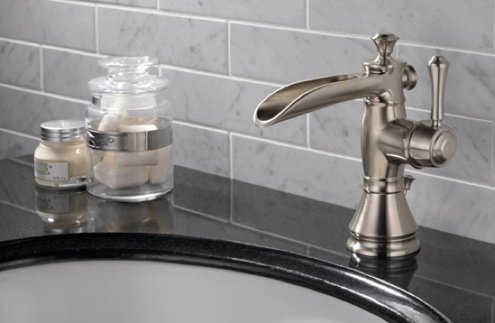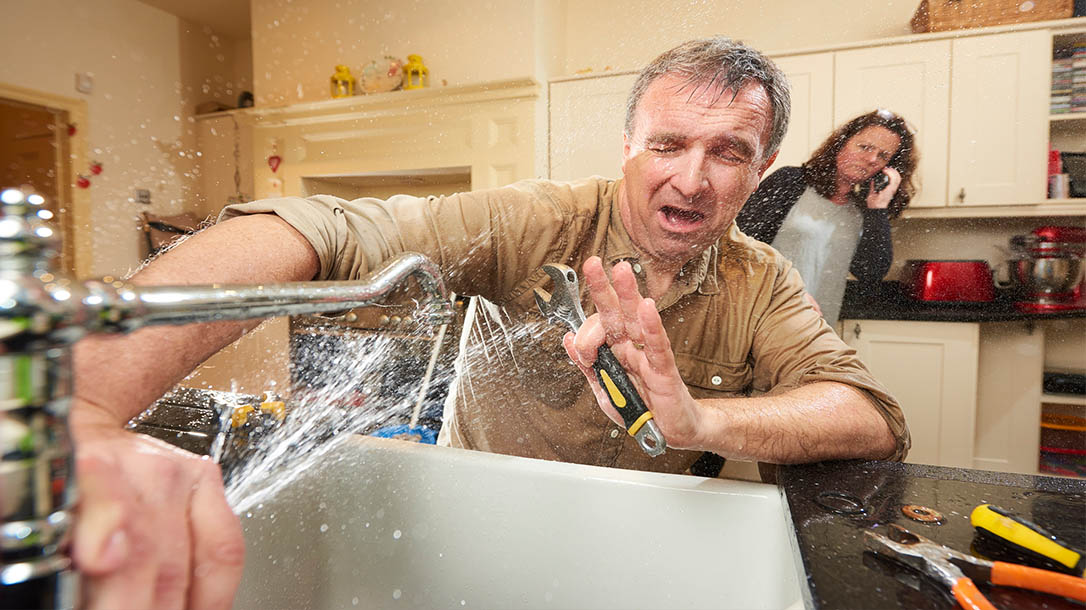Factors Why It's Critical to Fix a Faulty Faucet
Factors Why It's Critical to Fix a Faulty Faucet
Blog Article
What are your thoughts and feelings about Why It's Important to Fix Leaky Faucets?

Dripping faucets may appear like a small inconvenience, but their impact goes beyond simply the annoyance of the noise. From wasting water to sustaining unnecessary monetary expenses and wellness dangers, overlooking a trickling tap can bring about different repercussions. In this short article, we'll explore why it's essential to address this common household problem quickly and properly.
Wastage of Water
Ecological Influence
Leaking faucets add substantially to water waste. According to the Environmental Protection Agency (EPA), a solitary faucet dripping at one drip per secondly can squander greater than 3,000 gallons of water annually. This not just stress water sources but additionally impacts ecosystems and wildlife depending on them.
Step-by-Step Guide to Dealing With a Dripping Faucet
Devices Required
Before trying to take care of a trickling faucet, collect the essential tools, including a flexible wrench, screwdrivers, substitute parts (such as washing machines or cartridges), and plumber's tape.
Usual Faucet Issues and Their Solutions
Identify the kind of tap and the details concern causing the drip. Common problems include worn-out washers, corroded valve seats, or malfunctioning O-rings. Describe supplier guidelines or on-line tutorials for detailed advice on repairs.
Financial Expenses
Enhanced Water Bills
Beyond the environmental influence, trickling taps can pump up water expenses substantially. The built up wastage with time converts right into higher energy expenditures, which might have been prevented with timely fixings.
Prospective Residential Property Damage
Moreover, long term leaking can result in harm to fixtures and surfaces bordering the tap. Water build-up can cause staining, deterioration, and even architectural issues if left neglected, resulting in additional fixing expenses.
Health Issues
Mold And Mildew and Mildew Development
The constant presence of dampness from a leaking tap develops an excellent environment for mold and mildew growth. These fungis not only compromise indoor air high quality however additionally pose health and wellness risks, especially for individuals with respiratory system problems or allergic reactions.
Waterborne Conditions
Stationary water in trickling taps can come to be a breeding place for bacteria and other microorganisms, boosting the risk of waterborne conditions. Pollutants such as Legionella bacteria thrive in stationary water, possibly causing severe diseases when ingested or breathed in.
DIY vs. Professional Fixing
Pros and Cons of Do It Yourself Repair Work
While some might try to fix a trickling faucet themselves, do it yourself repair work come with their own collection of difficulties. Without correct understanding and devices, do it yourself attempts can worsen the issue or cause incomplete repair services, lengthening the problem.
Advantages of Working With a Professional Plumber
Employing a specialist plumber guarantees that the underlying root cause of the trickling faucet is dealt with properly. Plumbing technicians have the proficiency and equipment to identify and fix tap problems effectively, conserving time and minimizing the risk of further damages.
Environmental Responsibility
Private Contribution to Conservation
Taking obligation for taking care of leaking faucets lines up with wider efforts toward water preservation and ecological sustainability. Every person's actions collectively make a considerable impact on preserving priceless sources.
Sustainable Living Practices
By focusing on timely repair work and adopting water-saving behaviors, people contribute to lasting living methods that profit both existing and future generations.
Preventive Measures
Normal Maintenance Tips
To prevent trickling faucets, execute routine maintenance such as cleansing aerators, inspecting for leakages, and replacing damaged components quickly. In addition, think about mounting water-saving devices or upgrading to extra efficient components.
Significance of Prompt Fixes
Addressing leaking faucets as quickly as they're seen avoids additional water waste and possible damages, ultimately saving both water and money in the long run.
Influence On Building Value
Understanding of Well-Maintained Property
Preserving a building in good condition, consisting of addressing upkeep problems like leaking taps, enhances its viewed value and worth among possible buyers or occupants.
Impact on Resale Worth
Features with well-kept plumbing components, including taps, command higher resale values in the property market. Addressing leaking faucets can add to a favorable impact throughout residential property inspections and settlements.
Final thought
Attending to a leaking faucet exceeds plain benefit; it's an essential step towards conserving water, minimizing economic costs, and securing health and home. Whether via DIY repair work or expert aid, taking action to repair leaking taps is a tiny yet impactful means to promote accountable stewardship of sources and add to a much healthier, a lot more lasting future.
How to Fix a Leaky Faucet: Step-by-Step Repair Guide
A leaky faucet may seem like a simple annoyance, but if it's not fixed promptly, that leak could cost hundreds to potentially thousands. From water damage to mold, mildew, and high water bills, even a tiny leak can be catastrophic if left unattended. Damage like this can even affect the overall value of your home, so it's important to take the right approach for leaky faucet repair. You may need the help of a plumber in some cases, but we've got a few tips you can try on how to fix a leaky faucet before calling the pros.
Four Faucet Types
When you're learning how to fix a leaky faucet, the first step is knowing what kind of faucet you're working with! There are four common types.
Cartridge Faucets
Cartridge faucets come in one- or two-handled varieties. In one-handled cartridge faucets, hot and cold water combines in a single cartridge. In the two-handled versions, hot and cold water are controlled separately and mixed in the faucet.
Ball Faucets
Ball faucets have a single lever you push up and down to adjust the pressure and rotate to change the temperature. A slotted metal ball controls the amount of water allowed into the spout.
Compression Washer Faucets
They're the oldest type of faucet, but they're still used in many homes — especially older ones. Compression faucets have two separate handles that, when turned, raise or lower the washer that seals a water valve. This valve stops water from flowing through the faucet when it is turned off.
Disc Faucets
Disc faucets rarely need to be repaired due to their maintenance-free design. The water flow is controlled by two discs — the upper one raises and lowers against a fixed lower disc, creating a watertight seal. If your disc faucet starts leaking, you may need to replace the seals or clean residue buildup from the inlets.
Fixing a Leaky Faucet
Step 1: Turn Off the Water
Whether you're learning how to fix a leaky bathtub faucet or how to fix a leaky kitchen faucet, always turn off the water supply to your working area when you're fixing a leak. The last thing you want is a flood added to your list of things to fix.
Look for the shutoff valves below your sink or around the tub and turn them clockwise to stop the water flow. If your faucet doesn't have shutoff valves, you may need to turn off the water for the whole house. Check to make sure it's off by turning the faucet on. If nothing comes out, you're ready to start the repair.
Step 2: Take Apart the Faucet
How you disassemble your faucet depends on the type of fixture you have. You can use a flathead screwdriver to remove the caps on top of the handle or handles for cartridge and compression faucets. Inside, you should see handle screws. Unscrew these with a screwdriver to remove the handle.
Disc- and ball-style faucets will typically have an inlet screw near the handle, and removing that will reveal the interior of the faucet.
Detach the Valve Stem
For cartridge- and compression-style faucets, you'll see the inner valve stem or cartridge once you remove the faucet handles. If you have a compression faucet, unscrew the brass valve stem. If you have a cartridge faucet, pull out the cartridge. If your cartridge has been in place for a while, it may require some tools or extra force to remove it due to mineral deposits.
Examine and Replace Parts
Once you've removed the parts, check them out to confirm what needs to be replaced. You may see corroded rubber washers, O-rings, stems, or cartridges. On a ball-style faucet, check the seats and springs for damage.
If you need to repair a leaky disc faucet, check the inlet and seals on the lower disc.
Once you determine what parts must be replaced, visit your local hardware store. Bring the damaged parts with you to ensure you can purchase the correct components to replace them.
Clean Valves and Faucet Cavity
If you've removed a stem or cartridge, you may notice mineral buildup in the faucet's threads. Use white vinegar to clean the valve seat by soaking it for a few minutes, then scrub it away with a soft toothbrush and rinse with warm water. You can also clean the interior of the faucet in the same way.
Reassemble the Faucet
Once your faucet is cleaned and the required parts have been replaced, it's time to reassemble it. Put the pieces back together and slowly turn the water supply back on. Doing this slowly is crucial because too much initial water pressure can damage the new hardware you've just installed.
https://homewarranty.firstam.com/blog/how-to-fix-leaky-faucet

As a keen person who reads about 4 Common Reasons for a Leaky Faucet, I think sharing that piece of content was a smart idea. In case you liked our article please don't forget to share it. I love your readership.
Report this page